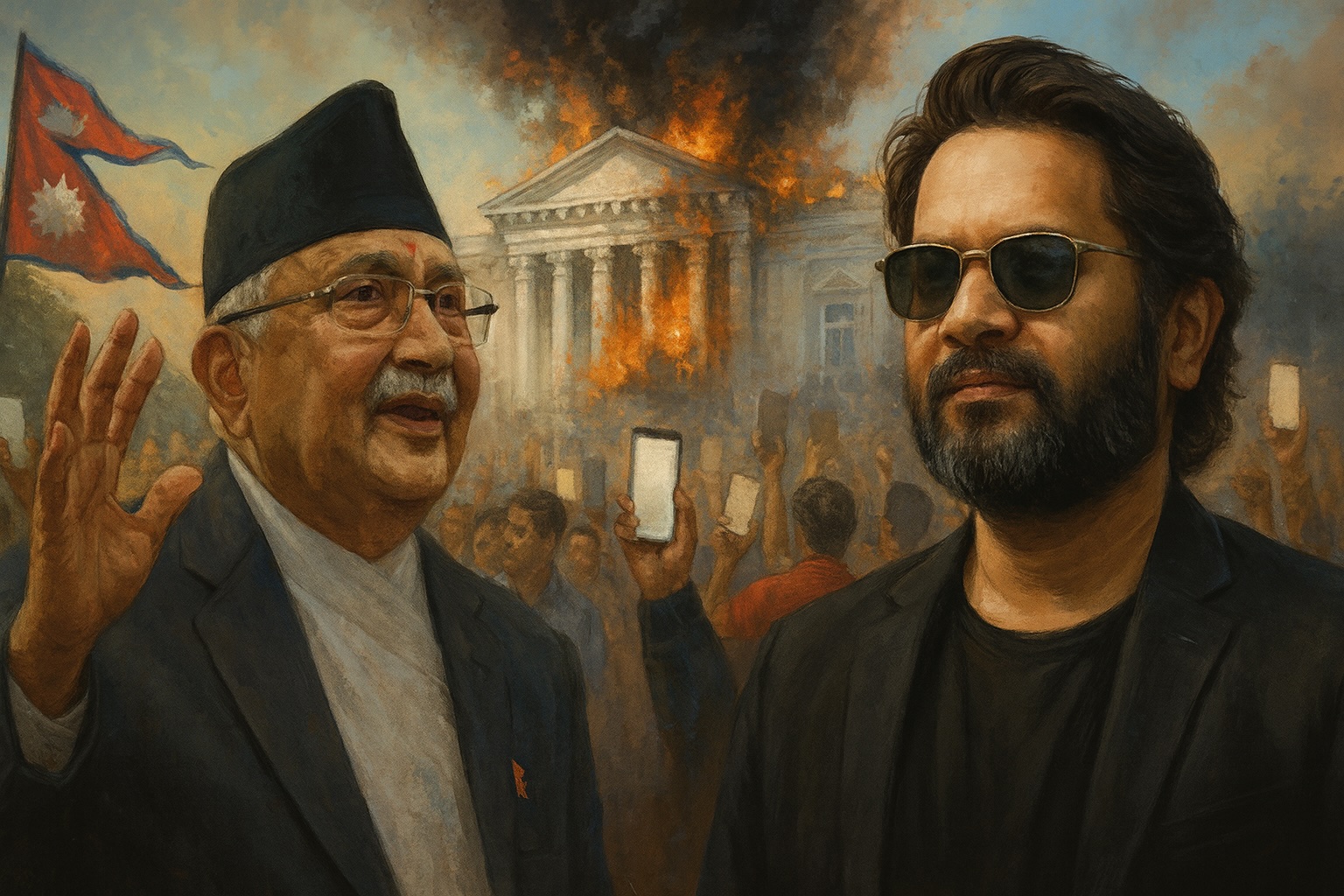Oli’s New Tactic for Power: Beat the Youth, Shield China, Blame India

Special Report: Gen Z Revolt, Oli’s Old Card, and the Geopolitical Shadow
The recent Gen Z uprising in Nepal is not an accidental or momentary outburst but the culmination of long-accumulated discontent. It reflects not only a fading faith in old ideologies—socialism, Marxism, and Leninism—but also a direct resistance by the younger generation against China’s growing interference and what many describe as a Chinese-style political transition. As skepticism deepens around Beijing’s Belt and Road Initiative (BRI) and Global Security Initiative (GSI), Nepal’s youth have taken to the streets to defend their freedom, opportunities, and democratic future.
Former Prime Minister KP Sharma Oli, however, failed to grasp the depth of this discontent. When public programs in Kathmandu began to echo with chants against him, reports emerged that Oli deployed police forces to suppress youth protests. Supporters of Mayor Balen Shah were barred from entering Hanuman Dhoka simply for wearing T-shirts with his name, while UML-affiliated youth groups were accused of attacking Gen Z demonstrators at Dasharath Stadium. High-level sources have confirmed that intelligence agencies submitted warning reports, but Oli chose to ignore them.
As questions about Oli’s accountability mounted, critics accused him of surrounding himself with loyalists and basking in their praise. Currently under heavy protection by the Nepal Army, Oli appears physically secure, but the discontent among young people is only intensifying. Meanwhile, UML leaders have tried to deflect anger by blaming India. They labeled Balen Shah a “RAW agent,” energy chief Kulman Ghising “a man of Prachanda,” and former finance secretary Rameshwor Khanal “anti-UML.” Even former Chief Justice and Prime Minister Sushila Karki was targeted as being “close to Modi,” deepening polarization on social media and widening divisions across society.
But these tactics seem increasingly ineffective. Oli’s repeated strategy of invoking anti-India rhetoric to bolster his nationalist image no longer resonates. This time, the public appears to have seen through the ploy, rejecting what many now describe as nothing more than a tool for clinging to power. On social media, citizens have reframed Oli’s “anti-India nationalism” as performative and outdated.
International media have also taken notice. The Indian press has described the movement as “an awakening of Nepal’s youth,” while Chinese outlets dismissed it as “instability fueled by external forces.” Analysts in the U.S. and Europe, by contrast, interpreted the uprising as a natural expression of democratic practice. This highlights how Nepal once again finds itself at the center of a geopolitical contest.
The multidimensional nature of what is being called the Chinese transition is also coming into sharper focus—politically, through efforts to influence parties; economically, via the debt risks tied to BRI; and socially, through GSI and cultural exchange programs that project ideological influence. By rejecting all these, Nepal’s younger generation has sent a clear message: “External interference in Nepal’s sovereign decision-making is unacceptable.”
The situation today is clear: no matter how much Oli spreads rumors of foreign meddling or attempts to suppress unrest through force, the central demands of the Gen Z movement—freedom, opportunity, and transparency—can no longer be ignored or sidelined. Nepal’s youth have rejected outdated ideologies and are asserting their voice for national independence and open democracy with renewed determination.




![From Kathmandu to the World: How Excel Students Are Winning Big [Admission Open]](https://nepalaaja.com/index.php/img/70194/medium/excel-college-info-eng-nep-2342.jpg)
